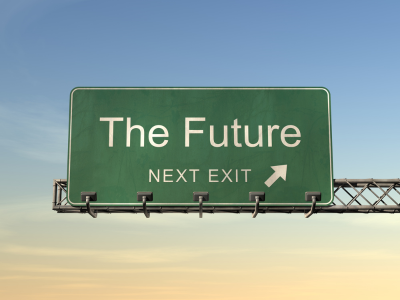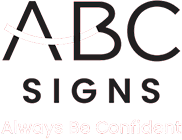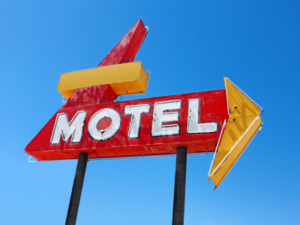
Long ago, signs were handmade and low-tech, using paint, wood, and other traditional materials. Today, signage is much more advanced, and businesses have traditional and digital sign options.
Digital signage has features that allow businesses to change their message as needed, whereas traditional signage has a lower upfront cost and requires minimal maintenance. If you’re shopping for a sign in Cincinnati, Ohio, the signage experts at ABC Signs can help. We’ll guide you through the process of choosing a sign, so you can make the best decision for your business and budget.
Understanding Digital Signage
Digital signage uses LED or LCD screens to display multimedia content. These signs can display static images, recorded videos, and animations. Businesses can update their signs in real-time, allowing them to share information about sales, events, and more. Signs can also be tailored to the time of day, the location, or the audience.
The flexibility and dynamic interactivity of digital signs make them popular in transit hubs as well as retail and corporate spaces. In some settings, advanced features like QR codes, touchscreens, and demographic targeting can engage audiences, helping to ensure that each customer gets what they need from your business signage.
Understanding Traditional Signage
Traditional signs are static displays made from materials like vinyl, metal, and wood. Traditional signs come in many formats, including storefront signs, banners, billboards, and directional signage.
While traditional signage lacks some of the features of digital signs, businesses on a budget turn to traditional signage to help direct and draw in customers in indoor and outdoor settings.
Traditional signage can be backlit with LEDs for increased nighttime visibility and improved visibility in poor weather conditions, making these signs perfect for a range of settings and businesses. For businesses like restaurants, big box stores, hair salons, car washes, and auto mechanics, traditional signage is an economical and effective form of signage, perfect for parking lots, storefronts, and indoor environments.
Installation and Maintenance Considerations
Know what to expect when you install the type of sign that you’ve selected for your business.
- Digital signage requires professional installation, ongoing software updates, and power management.
- Traditional signage is easier to install and maintain, with LED options enhancing durability and visibility.
Both types of signage benefit from energy-efficient LED enhancements for better performance and longevity.
Cost Comparison: Digital vs. Traditional Signage
Digital signage has initial costs for hardware and software, but a higher long-term ROI. Using your business’s digital signage, your business can give real-time updates and advertise promotions to bring in more customers.
Traditional signage is more affordable upfront, but frequent updates require new prints and installation, which can add to costs over time.
Audience Engagement: Which Type Performs Better?
It’s challenging to compare the performance of digital and traditional signage, as each type of sign promotes your business and serves customers in distinct ways.
Digital signage captures 400% more views and boosts purchase likelihood by 68% thanks to animations and interactivity. It’s perfect for indoor, high-engagement zones where messaging changes often.
Traditional signage is effective for clear, static messaging and consistent brand presence in outdoor spaces.
Can’t decide between traditional and digital signage? Talk to your sign maker about a hybrid model that offers the best of both—dynamic internal displays and reliable exterior signage.
Need Business Signage in Cincinnati? Contact Us.
Whether you need digital or traditional signage in Cincinnati, the professionals at ABC Signs can help. Contact ABC Signs to get started with business signage that promotes your brand and enhances your presence.

 Seasonal Signage Strategies to Attract More Customers This Fall
Seasonal Signage Strategies to Attract More Customers This Fall  How Effective Business Signs Boost Foot Traffic and Drive Sales
How Effective Business Signs Boost Foot Traffic and Drive Sales  Why Exterior Signage Is a Business Essential—and How to Get It Right
Why Exterior Signage Is a Business Essential—and How to Get It Right  The High Cost of Bad Signage: How Poor Design Hurts Your Business
The High Cost of Bad Signage: How Poor Design Hurts Your Business  How Weather Impacts Your Signage and Ways to Protect It
How Weather Impacts Your Signage and Ways to Protect It